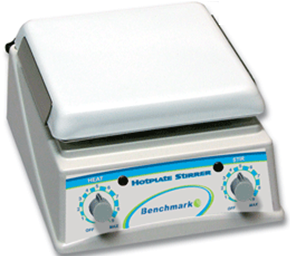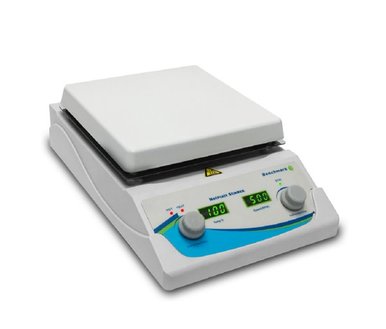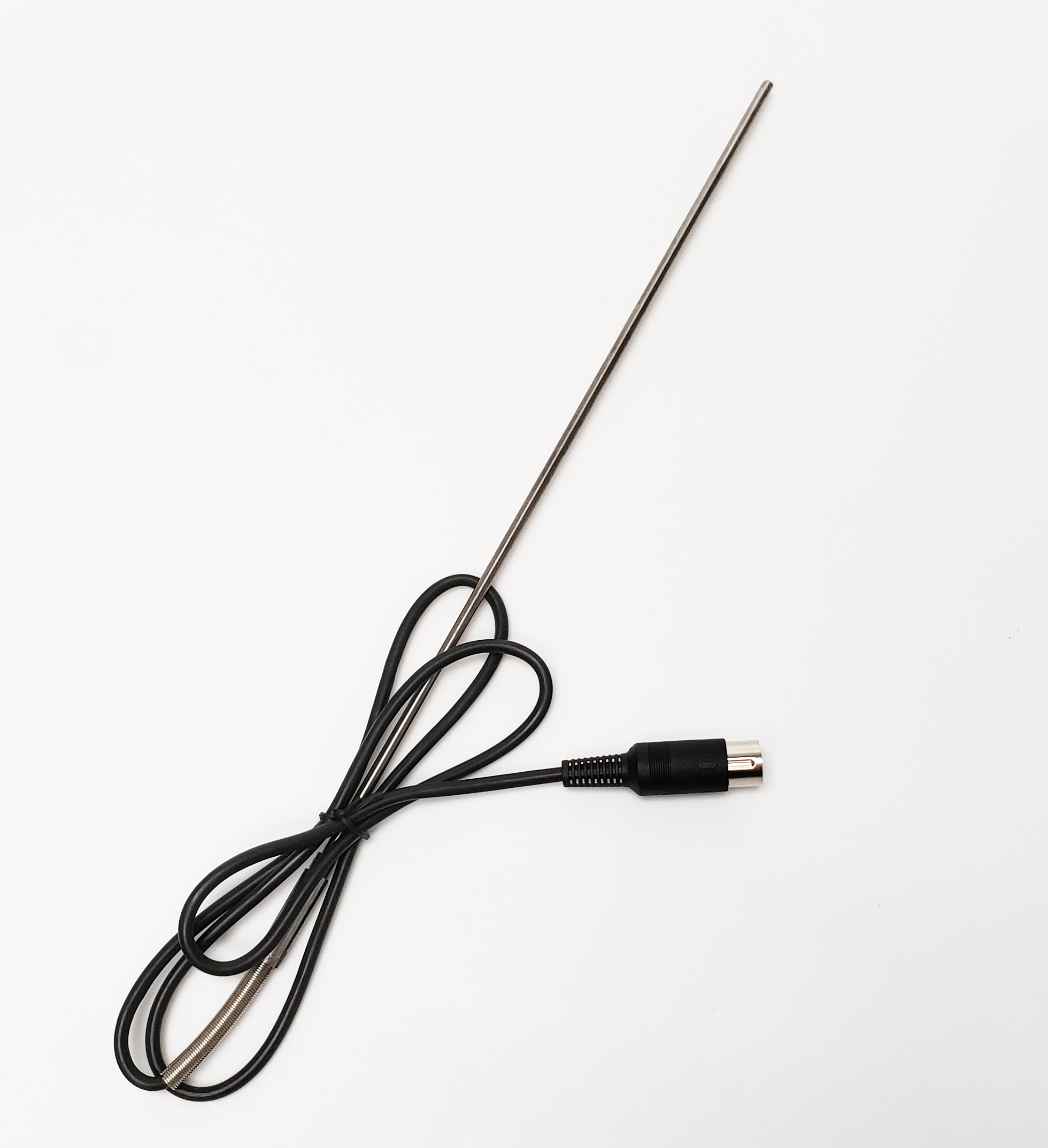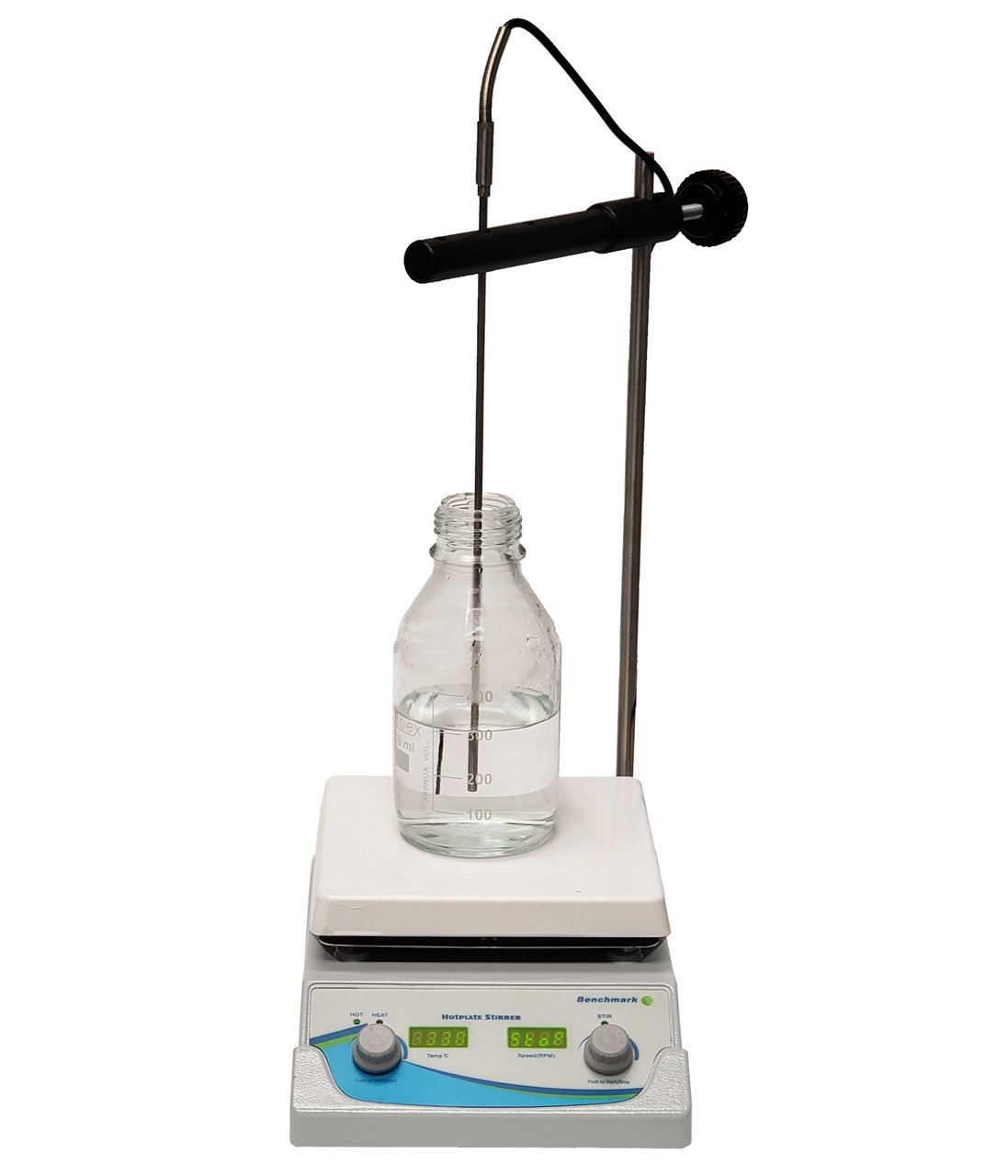Most lab equipment found in today's research laboratories have undergone major transformations, but the reliable hotplate-stirrer looks pretty much the same as it has for a century or more.
Taking the place of the witches cauldron or the alchemists crucible, hotplate stirrers are where laboratory "brews" are cooked, mixed and blended to perfection.
Regardless of the brand, nearly all hotplate stirrers feature the following components
- A durable ceramic, glass or enameled surface that is smooth and resistant to chemical spills
- A sturdy weighted base to add heft to the hotplate and prevent it from easily toppling over and spilling hot solutions
- A magnetic "motor" that creates a magnetic field and drives a stir-bar in circular motion to create a mixing vortex
- A thermostat for setting the temperature of the heated surface
Models will vary based on the size of the surface area, the power of the motor (how many Liters and what viscosity can be stirred at once), top stirring speed and top temperature - but the function remains the same.
The simplest and most cost effective choice of hotplate-stirrer are analog models.

An analog hotplate-stirrer uses knobs to adjust the temperature and speed, and lacks a read-out screen to report back to the user what the exact speed and temperature are.
An indicator light lets the user know the heating element is on and the stirring mechanism is operating.
When using an analog hotplate-stirrer a thermometer should be inserted into the solution to obtain an accurate reading of the real-time temperature.
Fine tuning the temperature and speed is done using the knobs and watching the change reported on the thermometer.
To guarantee the accuracy of the temperature it is recommended to use some sort of stand and clamp system so the thermometer is suspended into the solution and does not contact the walls of the vessel.
For most applications a laboratory can pocket the savings by selecting a basic analog hotplate-stirrer combined with an external thermometer.
Some solutions have a very tight tolerance for temperature fluctuation, and it is these instances where a digital hotplate-stirrer is absolutely required.

A temperature probe is plugged into the hotplate stirrer and inserted into the solution. As with the analog system, a clamp and rod to keep the probe in the middle of the solution and away from the vessel walls is critical.

The probe monitors the actual temperature of the solution and provides instant feedback to the microprocessor which makes small adjustments to the heating mechanism to keep the temperature precisely where it needs to be.
Whether your lab focuses on chemistry or molecular biology; whether you are making routine lab solutions, working with cannabis or cooking up something really new and novel - Stellar Scientific has the selection of hotplate-stirrers and the knowledge to help you succeed!


